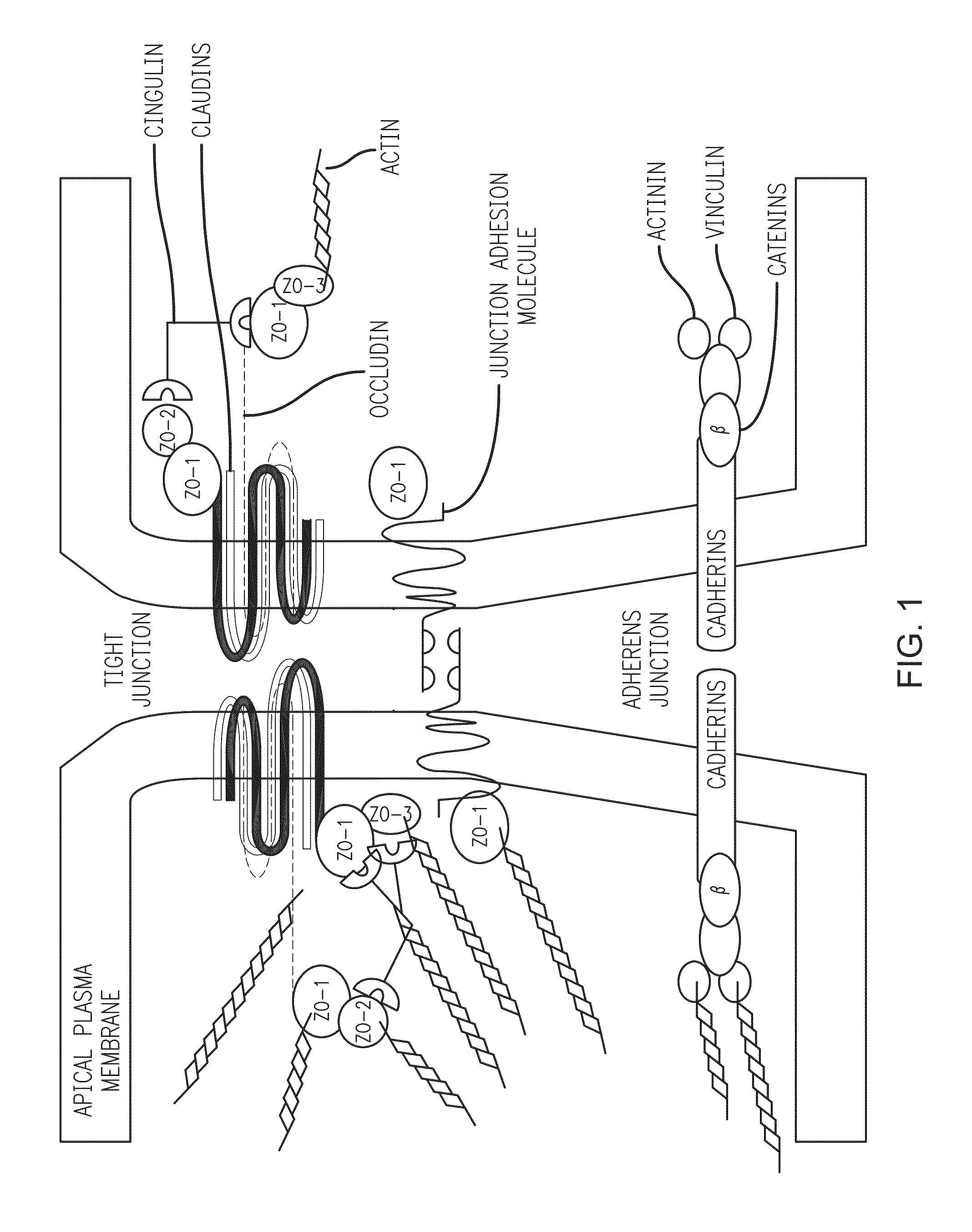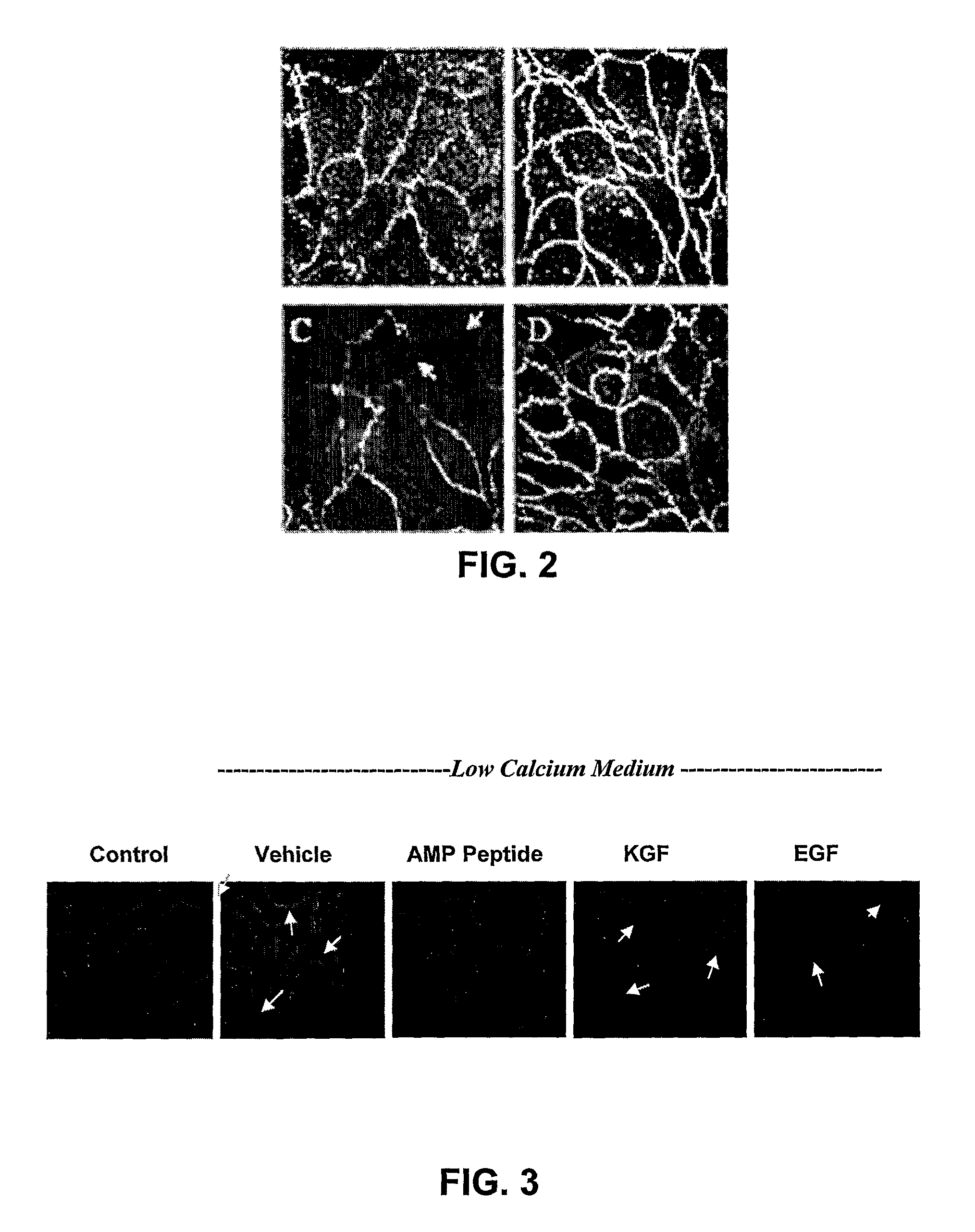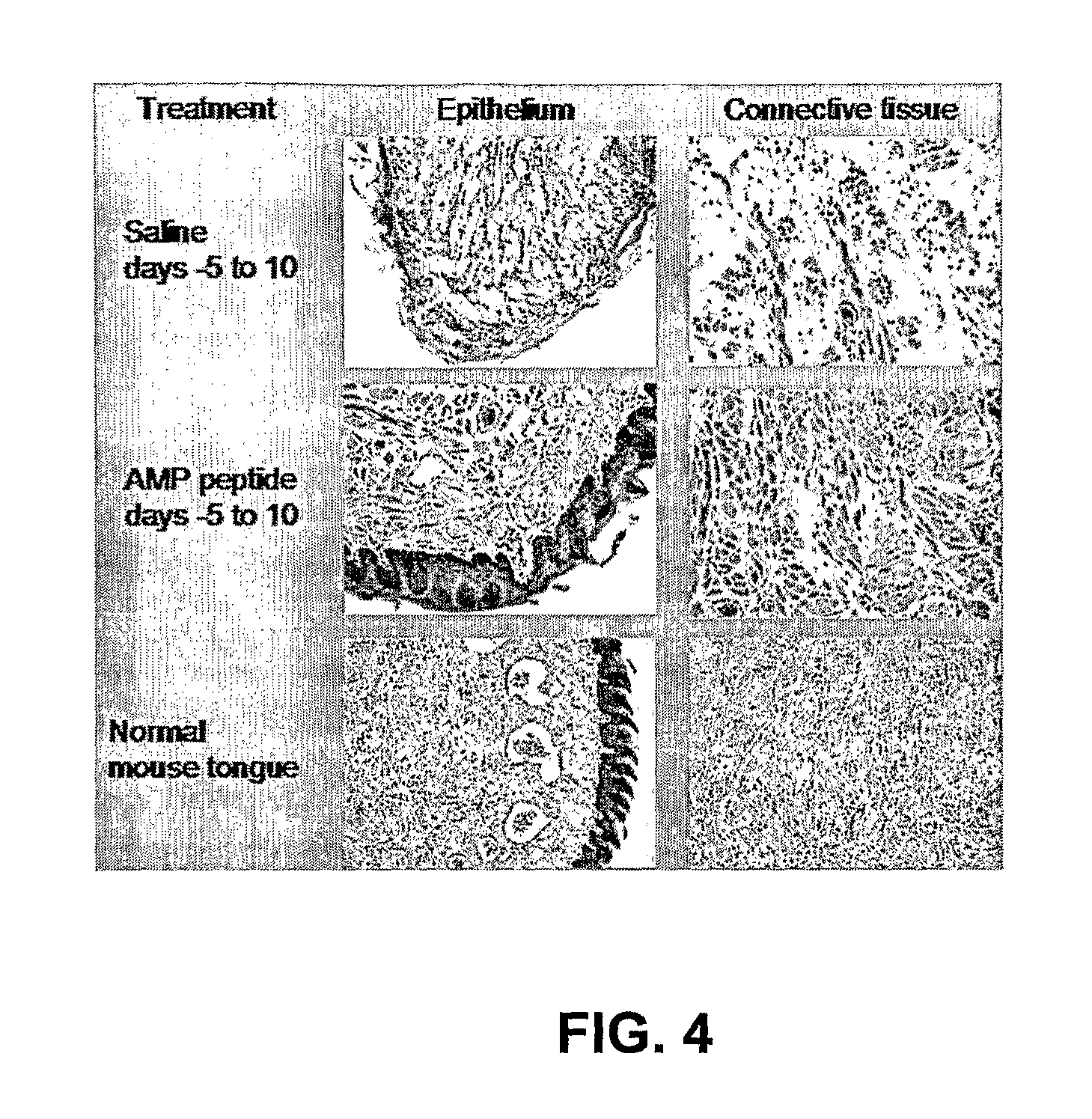Methods and compositions to treat mucositis
a technology of mucositis and compositions, applied in the direction of drug compositions, peptides, peptides/protein ingredients, etc., can solve the problems of treatment interruption, severe mucositis, and severe mucositis, so as to delay the onset of mucositis, and reduce the intensity of mucositis
- Summary
- Abstract
- Description
- Claims
- Application Information
AI Technical Summary
Benefits of technology
Problems solved by technology
Method used
Image
Examples
example 1
Effect of AMP77-97 Peptide in Mouse Model of Mucositis
[0061]The capacity of the AMP77-97 peptide to induce epithelial thickening of oral mucosal surfaces in mice and hamsters was studied to determine if these animals could be used to evaluate the potential of AMP77-97 peptide in the treatment of oral mucositis. In Study 1, female BDF-1 mice (n=8) and Syrian golden hamsters (n=8) were given daily subcutaneous injections of saline, mouse AMP77-97 peptide at 5 mg / kg, or 25 mg / kg for five days. The results of histological studies revealed that there was significant epithelial hyperplasia on the dorsal surface of the tongues in the BDF-1 mice treated with AMP77-97 peptide, and that in many animals hyperplasia was accompanied by hyperkeratosis. There also appeared to be an increase in both hyperplasia and hyperkeratosis with increasing dose (more prevalent / pronounced in the animals receiving 25 mg / kg than those receiving 5 mg / kg) and duration of dosing (there were some effects seen at 2 d...
example 2
Effect of AMP77-97 Peptide in Hamster Model of Mucositis
[0064]AMP77-97 peptide was tested in a hamster mucositis model in which radiation is used to injure the mucosal surface of the cheek pouch. In Study 4, male Syrian Golden hamsters (n=32) were given an acute radiation dose of 40 Gy directed to the mucosal surface of the everted left buccal cheek pouch. This results in peak injury 14-16 days later with clinically significant mucositis observed on days 12 through 28. AMP77-97 peptide (0-40 mg / kg) was administered by subcutaneous injection once daily starting five days before radiation (day −5) and continued until day 15, excluding day of radiation (day 0). Scoring in this model uses the same objective assessments of damage as the World Health Organization (WHO) scoring system used clinically. Every other day starting on day 6, photographs of pouches were taken and evaluated using the criteria depicted in FIG. 5. These photographs were scored by observers blinded to the experimenta...
example 3
Therapeutic Efficacy
[0069]The data disclosed herein points to multiple therapeutic targets for AMP-18 / AMP peptide. These include treatment of IBD by: (a) preventing or decreasing the frequency and intensity of acute exacerbations of this episodic disease by the AMP77-97 peptide's cell protective effect, and (b) speeding recovery of the colonic mucosal epithelium after an attack of disease occurs, i.e., a benefit inferred from the mitogenic and motogenic (wound healing) effects observed in cell culture and murine models of colitis. The cell protective, mitogenic and motogenic effects of AMP77-97 peptide also result in a therapeutic role in cancer-therapy induced mucositis of the GI tract as often occurs during chemotherapy and / or radiation therapy. Mucositis occurs in this setting because the therapeutic protocol is designed to destroy proliferating cancer cells, but may also damage rapidly growing cells that line the mouth, throat, or GI mucosa at any point along its entire length. ...
PUM
| Property | Measurement | Unit |
|---|---|---|
| viscoelastic | aaaaa | aaaaa |
| concentrations | aaaaa | aaaaa |
| transepithelial electrical resistance | aaaaa | aaaaa |
Abstract
Description
Claims
Application Information
 Login to View More
Login to View More - R&D
- Intellectual Property
- Life Sciences
- Materials
- Tech Scout
- Unparalleled Data Quality
- Higher Quality Content
- 60% Fewer Hallucinations
Browse by: Latest US Patents, China's latest patents, Technical Efficacy Thesaurus, Application Domain, Technology Topic, Popular Technical Reports.
© 2025 PatSnap. All rights reserved.Legal|Privacy policy|Modern Slavery Act Transparency Statement|Sitemap|About US| Contact US: help@patsnap.com



